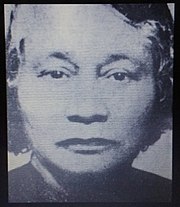Design
Design
Personality
Chart Properties
Your Cross represents the specific theme of your life. This cross embodies your unique potential & the lessons you're here to learn, providing a roadmap to fulfilling your life purpose.
We use the UTC birth time and date to do the calculations required to generate your Human Design chart.
Buy Tokens
Pay as you use, no expiry and no subscription required.Pierre Teilhard De Chardin's Biography
French paleontologist and Jesuit priest known for scientific and genetic research and for philosophical works on the meaning of evolution and the future of mankind. A Christian mystic, he sought to reconcile the Christian message with modern science. Controversial, he has emerged as an important force in contemporary thought, but was forbidden by his religious superiors to publish any works aside from those on paleontology during his lifetime, which caused him great distress. Consequently, his most important works, “The Divine Milieu” and “The Phenomenon of Man” were published posthumously. His central thesis is that evolution progresses directly from simple atoms to the complex organisms, and so on to man and consciousness. From that thesis, his concept was “the law of increasing complexity-consciousness” which states that throughout time there is a tendency for matter to become increasingly complex, and this is accompanied by a corresponding development in consciousness.
Teilhard was the fourth of eleven children and a distant descendant of Voltaire. His father was a country gentleman of means with a scholarly interest in history, and he instilled in his son a passion for animals and plants, and the volcanoes and rocks of the region in which he grew up. In 1892, he started his formal education at a Jesuit college, and won many prizes for his hard work and high intelligence. Interestingly, he always fared poorly in religious instruction because he was at odds with the format of the teaching.
At age 17, he dedicated his life to religion and began his novitiate as a Jesuit at Aix-en-Provence in 1899. Within two years, the anticlerical movement in France evacuated the seminary to Jersey. At age 24, he was sent to Cairo to teach physics and chemistry in a Jesuit school. His “Lettres d”Egypte 1905-1908” written at this time revealed his interest in searching the local hills and deserts for fossils.
In 1908, at age 27, he went to Hastings, England to begin the Jesuits’ required four-year theology study. He also continued his scientific studies. He was ordained to the priesthood in 1911 and sent to Paris to study natural science. His life during this time is reflected in “Lettres d’Hastings et de Paris, 1908-1912” and “Letters from Paris, 1912-1914.”
During World War I, Teilhard was a noncombatant stretcher-bearer in the medical corps. He refused a chaplain’s commission, and was awarded medals for bravery under fire, including the Croix de Guerre and the Medaille Militaire. It was during these war years that his personality and ideas developed critically, reflected in “The Making of a Mind 1914-1919.”
In 1919, Teilhard went back to the Sorbonne and finished his degree in natural sciences, followed by research for his doctorate in paleontology, and the publishing of his thesis in 1922. He then taught geology at the Institut Catholique, until in 1923 he joined a paleontological expedition to China in 1923. Between 1924 and 1926 he was back in France writing and publishing scientific papers on his China work. These publications, however, imparted some of his ideas about original sin and its relation to evolution, and he was regarded as unorthodox by his religious superiors. He was instructed to concentrate on scientific work and forbidden to continue teaching or publishing any of his philosophical and theological writings during his lifetime. In 1926, he went back to China, where he was to stay, apart from brief visits abroad, for 20 years. His China years resulted in his most important paleontological work, but many of his biographers have regarded the time as banishment.
His most important work, “The Divine Milieu” was completed in 1927, while he was working as a scientific adviser to the Geological Survey of China and going on expeditions such as the one that discovered Peking Man. In the late 1930s he wrote “The Phenomenon of Man” which became an immediate best seller when it was finally published after his death.
Other letters from Teilhard at this time revealed the mental anguish he felt because he was not allowed to publish, especially after his return to France at the end of World War II when he was refused permission to become a candidate for the highest academic post in France, professor at the College de France. In 1951 he accepted an appointment as a research fellow with the Wenner-Gren Foundation for Anthropological Research in New York. Apart from two visits to South Africa, he spent the rest of his life there.
He said he hoped he would die on the “day of the Resurrection” and he died in New York City on 4/10/1955. Teilhard is remembered by his friends as a man of great personal charm and humor: His writings, however controversial, have established him as a major philosopher of the 20th century.
Link to Wikipedia biography
Pierre Teilhard De Chardin
Your Cross represents the specific theme of your life. This cross embodies your unique potential & the lessons you're here to learn, providing a roadmap to fulfilling your life purpose.
We use the UTC birth time and date to do the calculations required to generate your Human Design chart.
Pericle Felici
1/3 Sacral GeneratorMarquise of Maintenon
5/1 Emotional - Solar Plexus Manifesting Generator

Rosa Torre González
2/4 Emotional - Solar Plexus Manifesting GeneratorJames Michael Farnham
5/1 Sacral Generator





